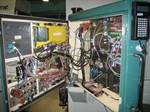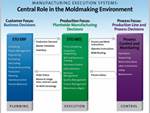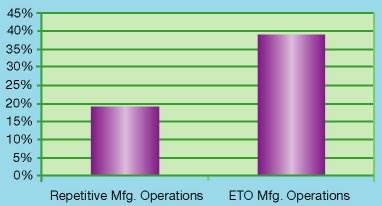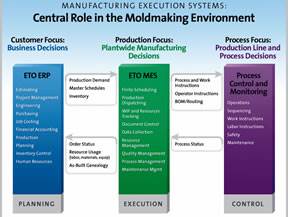Real-Time and Supply Chain Visibility
With data continuing to be top of mind for today's mold manufacturers, I wanted to share this take on data management.
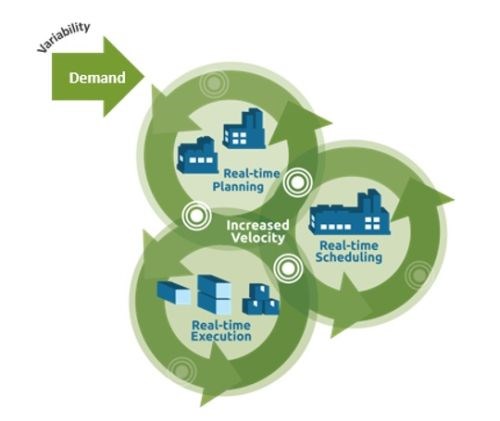
Tom Cutler works to tell the stories of manufacturers that have simply neglected to tell theirs. I have worked with him in the past and he recently shared with me his article about managing data and Synchrono, a company that supplies demand-driven manufacturing software solutions, so I wanted to pass it on.
The process of manufacturing molds is often highly automated and the Industrial Internet of Things (IIoT) is enabling moldmakers to become fully digitized. While mold manufacturers diligently route data, most cannot easily access the data they need when needed. The ability to do such will help mold manufacturers work smarter and more competitively, impacting not only core key performance indicators (KPI) used to evaluate the success of a company, but more forward-thinking initiatives that keep production moving and downtime to a minimum. This entails real-time data sharing across machines, tools, sensors and systems—anything that collects useful data.
Modern demand-driven mold manufacturers are connecting their environments within individual plants, across an enterprise of multiple plants and throughout the extended supply chain, while keeping data in its host environment, where it was originally generated or collected. Data is accessed, aggregated, analyzed and shared by “normalizing” data, or putting data in a format that can be easily shared with other systems, and making it accessible in real-time with technology that enables bi-directional communication between server and client. Moldmakers are looking toward lighter weight, more flexible and scalable software systems that can normalize data, make it accessible, and help effectively transform aggregated data into performance-improving information. They need real-time and supply chain visibility.
Pam Bednar, VP at Synchrono says, “For many moldmakers collaboration and visibility are one in the same. Greater visibility leads to greater collaboration.” Driving growth and sustaining a competitive advantage is based on meeting customer demand. Meeting customer demand is dependent on a high-performing supply chain.
Moldmaking involves global supply chain management, which requires moldmakers to manage data from multiple sources (spreadsheets) while trying to juggle the variation of supply and demand. Real-time visibility means a single screen where they can view real-time replenishment, inventory and order status, and provide similar views to their customers and partners.
Supply chain visibility (SCV) software is a multienterprise, collaborative software stack that provides supply chain business partners at different tiers within and across the organization with controlled, real-time or at least near-real-time access and transparency to accurate, timely and complete plans, events and data. This includes transactions, content and relevant supply chain information.
SCV is an area of research for Gartner, an information technology research company, that says that SCV software adoption is no longer a “nice to have” for any manufacturer. Adoption rates are growing across industry segments with industrial manufacturing leading the way at nearly a 20-percent rate.
Gartner also suggests that visibility initiatives should be closely aligned with business drivers and risk management to lend focus and realize the greatest initial return. It goes without saying that the level of visibility many manufacturers need goes hand in hand with manufacturing digitization. For example, take an aerospace and defense manufacturer with composite parts requiring 12 hours in an oven. Before they become fully digitized, they wouldn’t know there was a quality issue on these parts until they came out of the oven. Today, quality and maintenance engineers are instantly notified of issues – and production can immediately rebuild or reroute parts to another oven. Time is money; and for them, the ability to pre-empt these types of issues represented a significant savings. Improving data normalization, and real time and supply chain visibility is possible for mold manufacturers too.
Related Content
Precision Meets Innovation at IMTS 2024
After attending IMTS, it's clear that the integration of advanced technologies is ready to enhance precision, efficiency and automation in mold manufacturing processes. It’s a massive event, so here’s a glimpse of what the MMT team experienced firsthand.
Read MoreMMT Chats: Solving Schedule and Capacity Challenges With ERP
For this MMT Chat, my guests hail from Omega Tool of Menomonee Falls, Wisconsin, who share their journey with using enterprise resource planning (ERP)—and their people—to solve their schedule and capacity load monitoring challenges.
Read MoreHow to Analyze and Optimize Cutting Conditions to Reduce Cycle Time
Plastic injection mold design and manufacturing company puts NC program optimization software module to the test. The results were surprising.
Read MoreHow to Use Scientific Maintenance for More Accurate Mold and Part Troubleshooting
Discover how adopting scientific maintenance approaches helps improve mold lifespan, minimize failures, and optimize production outcomes.
Read MoreRead Next
Can the Wrong ERP System Cost You Your Job?
More than one-third of all moldmaking manufacturers are custom shops, producing one-of-a-kind, unique products. Ironically, these special engineer-to-order manufacturers are the most vulnerable.
Read MoreMeasuring the Effectiveness Of Your Mold Machining Ops
A review of the shortcomings and solutions to OEE challenges.
Read MoreManufacturing Execution Systems for Mold Manufacturers
A look at a system for mold manufacturers that can be used to measure and control critical production activities.
Read More


